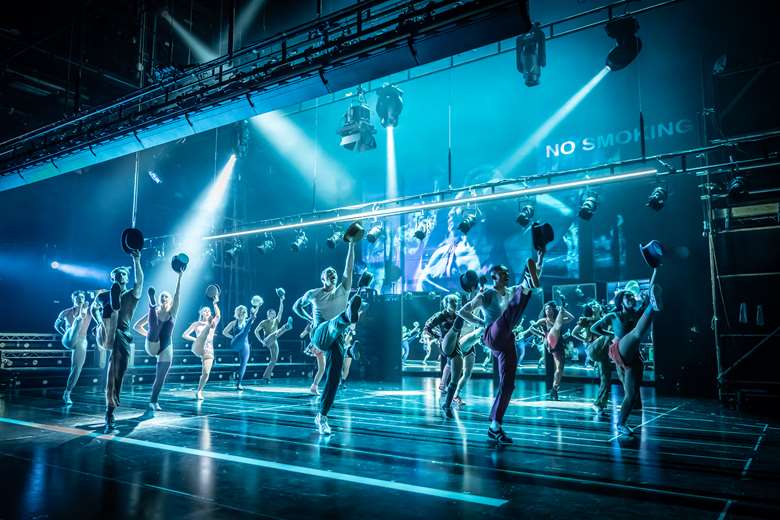Keeping Score: A Chorus Line
Jason Carr
Thursday, August 1, 2024
Orchestrator Jason Carr on how the brainchild of director-choreographer Michael Bennett, with an outstanding score by first-time Broadway composer Marvin Hamlisch, became an evergreen classic

Traditionally, the producer has been the driving force behind most musicals (Florenz Ziegfeld, Theresa Helburn, David Merrick et al). However, the 1960s saw the emergence of the director-choreographer as the pre-eminent figure. Jerome Robbins, Gower Champion and Bob Fosse were the towering talents, and in the 1970s a new force emerged – Michael Bennett. Perhaps the most crucial step in his development from plain choreographer to full ‘conceived, choreographed and directed by’ billing was his collaboration on the first two shows of the Harold Prince/Stephen Sondheim oeuvre – Company and Follies, both of which eschewed a traditional linear plot and, in the case of Follies, used showbusiness as a metaphor for the disappointments underlying the American Dream.
As an ex-chorus dancer himself, Bennett felt that the dancing chorus was generally undervalued and underpaid, and so conceived a show set at a ‘cattle call ’ open audition, drawn from interviews with dancers. He persuaded Joseph Papp to fund the R&D at the Public Theater, away from the commercial pressures of Broadway, where there was more room to experiment with form. The work was already proceeding, with book writer Nicholas Dante shaping the dancers’ testimonies, before the songwriters were chosen. Composer Marvin Hamlisch (one-time rehearsal pianist for Funny Girl) had found Hollywood success with The Way We Were but was yet to write for Broadway. Lyricist Edward Kleban was very much only an emerging talent (as later documented in the bio-musical A Class Act). A second book writer, James Kirkwood, later joined the team.
The score that emerged is perhaps best represented by the extended sequence ‘Hello Twelve’. Though it incorporates traditional song elements, it is a patchwork of songlets, often a direct setting of the dancers’ reminiscences. It includes perhaps the most gorgeous melody in the evening, Maggie’s ‘Please take this message to mother from me’, rendered all the more poignant by being juxtaposed with memories of dysfunctional parents and teenage sexual anxiety.
‘At the Ballet’ similarly counterpoints the youthful, stagestruck dreams with the tawdriness of real life, and contains multiple climaxes to rival The Sleeping Beauty’s ‘Rose Adagio’ – who can forget Maggie’s top E soaring ecstatically as three trumpets blaze away?

Hamlisch was keen to insert a song that could have life outside the theatre. Kleban was less struck, but ‘What I Did for Love’ certainly delivered, although it requires thoughtful presentation not to jump out in context.
Many hands worked on the show. It was hard to get one orchestrator to commit to a project that paid below Broadway rates and was not expected to be a hit. The billing credits Bill Byers, Hershey Kay and Jonathan Tunick, though we know that Harold Wheeler, Philip J Lang, Larry Wilcox and Ralph Burns all also contributed, overseen by musical director and vocal arranger Don Pippin. Though today a 17-piece orchestra sounds extravagant, at the time it was below par, lacking the usual string section.
Amazingly, the group effort was extremely harmonious. I was lucky enough to sit in the orchestra pit for the 2013 London revival, where I wept openly on multiple occasions, particularly for Wheeler’s extraordinary work on ‘The Music and the Mirror’.
The two versions of ‘One’, the diegetic song the auditionees learn for the show, are fascinating. The first ‘rehearsal ’ version brilliantly counterpoints the song with the complicated thoughts racing through the dancers’ minds, surrounding the generic harmonies with unexpected, eerie colours. The Finale, with its gold costumes and thrilling brass fills, should be a triumphant celebration of the final auditionees’ success, but is also chilling as the personalities we’ve got to know are submerged into, yes, the chorus line.
Of course, we now know that in 1983 it became the longestrunning Broadway show (now the seventh), celebrated with a legendary performance including 332 veteran cast members – oh, for a film of that night! It remains a surprisingly poignant and moving work, where youthful energy and optimism is contrasted with a harsh, unforgiving world of commercial imperatives and job insecurity. One man’s vision corralling a great collective endeavour – Michael Bennett for president, anyone?
Jason Carr's listening recommendation
A Chorus Line 40th Anniversary Celebration (remastered edition of 1975 Original Broadway Cast Recording)
Wayne Cilento, Priscilla Lopez, Donna McKechnie, Pamela Blair et al
Masterworks
Broadway Released 2015
Discounting the 1985 film soundtrack (not without interest), we have two Broadway contenders. The 2006 revival is more (but not fully) complete than the 1975 original, but the OBC remains superlative, its 40th Anniversary reissue remastered with tempting bonus tracks performed by Hamlisch and Kleban.
This article originally appeared in the June/July 2024 issue of Musicals magazine. Never miss an issue – subscribe today


